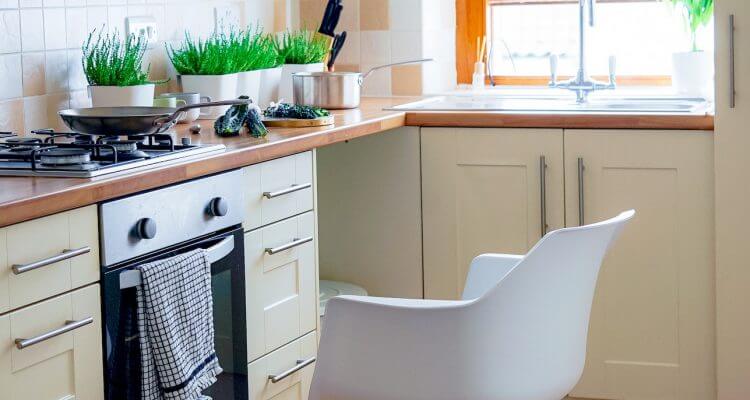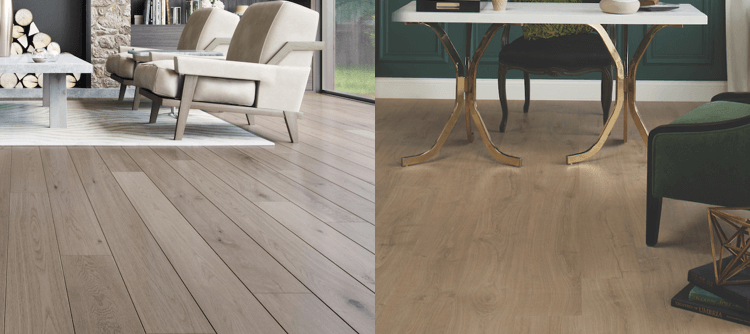
7 Tips for Choosing the Right Floor For Your Home
Choosing the right floor for your home is no easy decision, but it’s an important one to get right.
When you’re choosing your flooring there are multiple elements to consider so that you look at realistic options, stay on budget, and finish your project on time.
Here are seven key tips to make sure that you don’t make silly mistakes during this decision-making process:
1. Consider the Room
As expert contractor, Tom Silva reminds us, during any reno you need to consider the varying needs of each room in the house. That means you’re probably going to pick a completely different floor for a bathroom versus a living room. Here are some room-specific tips to keep in mind:
- Living rooms: These rooms are often central open spaces that take a lot of foot traffic. Go for a floor that is highly scratch resistant, and can handle the weight of heavy furniture.
- Bathrooms: These rooms get wet. A lot. Go for a floor that is mould and mildew resistant. You may also want a more textured floor if you’re looking for slip resistance and something warm on your bare feet.
- Bedrooms: If your bedrooms are upstairs, chances are you’ll a want a floor with a soundproofing layer. This way you won’t hear trampling feet above you when you’re downstairs.
- Kitchens: These rooms get a lot of foot (and food) traffic, so go for a floor that is low maintenance and won’t showcase a bit of dirt.
2. Consider Your Lifestyle and Life Stage
This is one of the most important elements to consider: how are you primarily using the space? Do you have kids, pets, lots of people over on weekends?
Getting a great looking floor doesn’t mean much if it becomes a constant chore to upkeep because it doesn’t suit your lifestyle. Be honest about where you’re at in life and choose a realistic option.
That being said, if you’re remodelling or buying a home, it’s smart to think long-term. Are you considering a family? This will make a big impact on your purchasing decision.
3. Honour Your Budget (and Timing)
What’s your price point? Are you looking to do multiple rooms or just one? Get quotes early on based on the square footage of the room. This way, you can map out how much to allocate for the room or multiple rooms, and you won’t run the risk of going way over budget during your renovation.
Timing is also a super important factor to consider. For example, if you’re doing the floor installation yourself, you’ll want to order all the materials well in advance. A special order may take several weeks to arrive.
Pro Tip: If you have leftover flooring after your installation, store it in a safe, dry place. Replacing one plank from your existing stock is much easier and cheaper than sourcing and buying another shipment of your flooring.
4. Think about Future Upgrades
Is this floor remodelling part of a long-term upgrade in your home? If so, it’s worth picking out styles in advance and choosing the best floor that matches those styles. This way your new floor will match your upgrades, not your current, soon-to-be-changed furniture. It may sound obvious, but this key point can often get overlooked.
5. Know your Style
What kind of style inspires you? How would you define your style? When you’re choosing your floor, you want to make sure that it meshes with the vibe of your home. Unless you’re doing a complete remodelling, you’ll want to make sure that it complements your current furniture and uses for the space.
Flooring stores will let you take samples home for a couple days. Definitely take advantage of that. Here’s why: your home’s lighting is much different than that of a retailer’s. You want to make sure that the flooring you pick looks as good in your home as it does in the store.
Pro Tip: Examine the floor samples in your home at different times of the day. You’ll notice how different they look in the day versus the evening. You want to love your floor at all times of the day.
6. Invest in Longevity
Can you easily replace flooring planks or tiles? What’s the warranty? These are the kinds of questions you need to ask as a savvy floor purchaser. There’s no real right or wrong answer to these questions, but you need to think about how long you plan on being in your home and how much the space gets used.
7. Make Your Flooring Count by Planning in Advance
It’s worth the time and energy to plan in advance before buying a floor. This way, you make an informed purchase that you’ll be much happier within the long-term.
How did your last floor renovation go? Looking for more advice on how to choose the right floor for you? The TORLYS Team loves to help. Contact us on Twitter or Facebook to get in touch.


